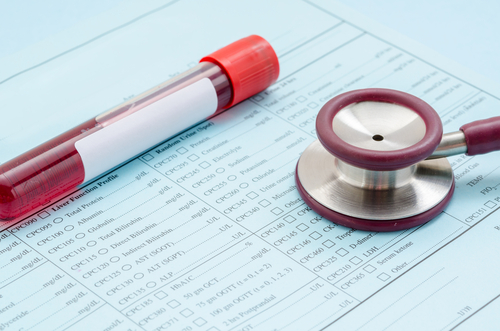High Bradykinin Levels Contribute to Nonallergic Angioedema, Study Suggests

Bradykinin — the molecule involved in most angioedema attacks — also plays a part in a nonallergic type caused by angiotensin-converting enzyme (ACE) inhibitors, including migraine and blood pressure medications, a study found.
But Firazyr (icatibant), an inhibitor of bradykinin signaling, is not effective in resolving these acute attacks, either because patients arrive at a hospital too late for treatment, or other molecules in addition to bradykinin contribute to the disease.
The study, “Endogenous Bradykinin and BK1-5 during ACE Inhibitor-Associated Angioedema,” was published in the Journal of Allergy and Clinical Immunology.
Nonallergic angioedema is thought to be caused by rising levels of bradykinin, a vasodilator that triggers blood vessels to widen and become more permeable, leading to swelling.
The condition sometimes is a side effect of medication for high blood pressure, including ACE inhibitors. These drugs interfere with the degradation of bradykinin, contributing to its buildup.
One of the difficulties in managing nonallergic angioedema is that medications commonly used to treat other types of angioedema normally are not effective for treating the condition.
These medications include antihistamines, corticosteroids, epinephrine, or non-steroidal anti-inflammatory drugs (NSAIDs).
But some studies indicate that Shire‘s Firazyr (injectable icatibant), used for hereditary angioedema, may be effective for treating acute attacks of nonallergic angioedema.
Firazyr is a C1-inhibitor, a natural protein involved in inflammation, that also blocks bradykinin’s mechanism.
Several randomized clinical trials (NCT01154361, NCT00517582, NCT01574248, NCT01919801) have yielded conflicting results about Firazyr’s effectiveness in nonallergic angioedema caused by ACE inhibitors.
The reason may be that bradykinin itself is not the cause of nonallergic angioedema, and that other molecules not targeted by Firazyr may be the triggers. Another explanation is that patients come in too late for treatment.
Researchers set out to investigate whether bradykinin really is behind nonallergic angioedema attacks, and whether Firazyr can possibly relieve it.
They compared the levels of bradykinin, and their degradation subproducts, in the blood of 41 patients experiencing an acute attack of ACE inhibitor-associated angioedema and 19 control subjects, who were taking ACE inhibitors but had no signs of angioedema.
Participants were referred to the Vanderbilt University Medical Center.
Samples were collected, on average, 14 hours after the first symptoms of an attack; in 15 patients, blood samples were also taken after the resolution of symptoms.
Bradykinin levels were significantly higher in patients with ACE inhibitor-associated angioedema compared to controls. The elevated levels were consistent with those previously reported during attacks of ACE inhibitor-associated or hereditary angioedema.
In contrast, subproducts of bradykinin degradation, BK1-5, were identical in both patient groups, suggesting that bradykinin degradation was lower in angioedema patients.
The fact that ACE activity — subsided by ACE inhibitor drugs — was equivalent in both groups suggests that other degradation pathways not affected by ACE inhibitors are impaired and contribute to the buildup of bradykinin in patients with nonallergic angioedema, researchers say.
In addition, bradykinin levels were not seen to change significantly in angioedema patients after the resolution of symptoms, even following therapy with Firazyr.
On the contrary, there were signs of higher degradation of bradykinin during convalescence in angioedema patients — an increased concentration of BK1-5 — likely because of withdrawal from ACE inhibitors.
Sex, smoking history, or diabetes did not seem to influence these levels.
“Excess bradykinin results from decreased degradation” in patients with nonallergic angioedema taking ACE inhibitors, researchers wrote.
“These data support the understanding that bradykinin contributes to ACE inhibitor-associated angioedema,” they said, advancing the theory that Firazyr’s lack of effectiveness in some trials was likely due to patients being treated too late.
In the study that reported a benefit of Firazyr, the mean time to treatment was 6.1 hours, less than half of that in the current study (14 hours).
In addition, molecules other than bradykinin may also lead to blood vessel permeability and contribute to the attacks, researchers said.






